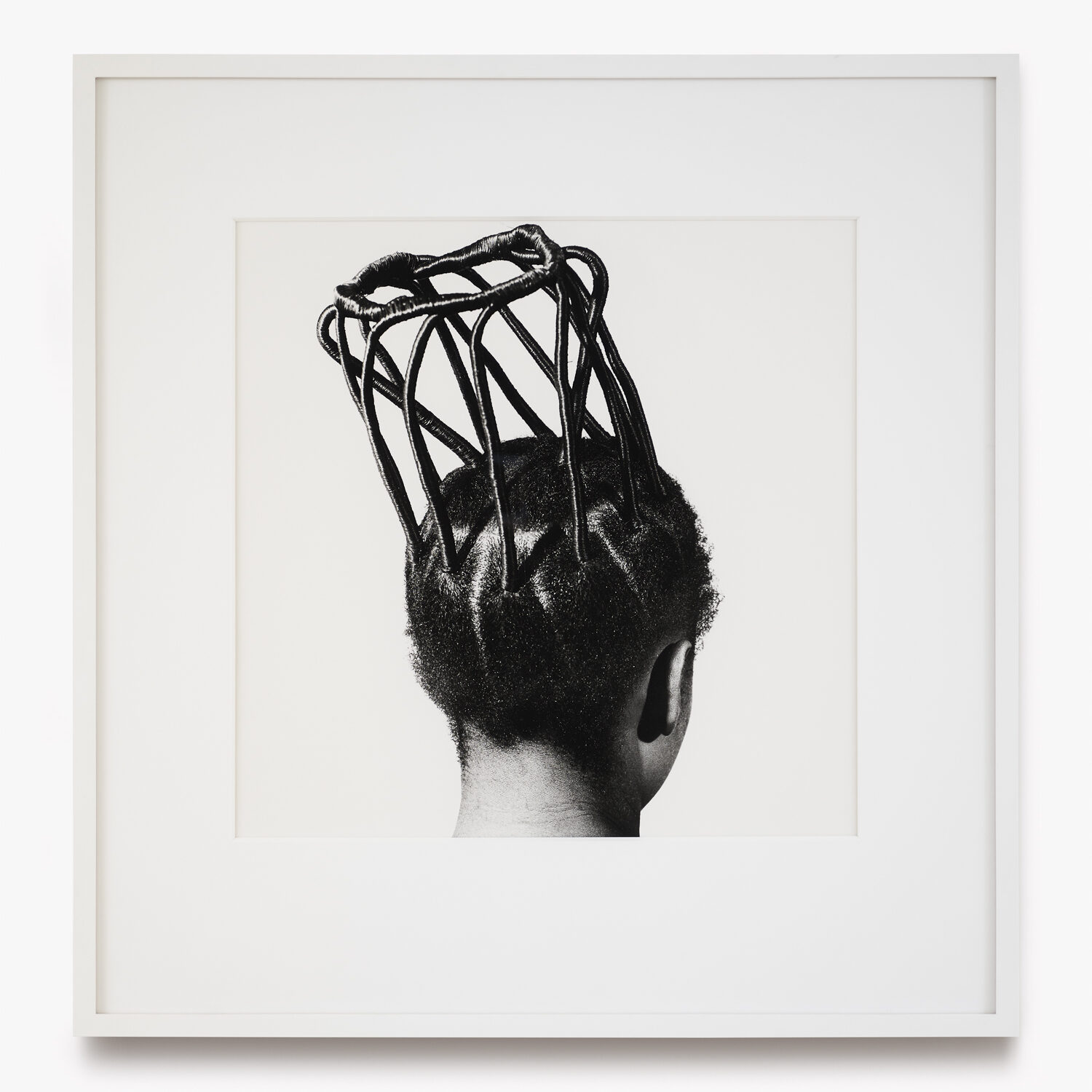The heat and unfortunate sweat of summer is here, and each year the question remains: “What should I do with my hair today?” Hannah Traore Gallery is currently presenting their group exhibition, Don’t Touch My Hair – a perfectly timely show for the season. Curated by Hannah Traore herself, the exhibition explores the significance hair holds in our lives and the role it plays in cultural identity.
The relationship we have with our hair looks different to everyone, but holds significant value in human experience. Hair can be used as a tool to explore aesthetic identity, encourage self-confidence, and change not only our self perception, but how we are perceived by others, as well. At times, it even acts as a defense mechanism for those going through bodily or physical identity changes.
Don’t Touch My Hair dives into these ideas, and the deep emotional relationship each one of us has with our hair – whether on our heads, or our bodies. Featuring work by Andy Jackson, Anya Paintsil, Baseera Khan, Brianna Lance, Camila Falquez, Felandus Thames, Hiba Schahbaz, Hong Chun Zhang, Jayoung Yoon, Jazmine Hayes, J.D. ‘Okhai Ojeikere, Kezia Harrell, Laetitia Adam-Rabel, Marcel Marien, Murjoni Merriweather, Ma Yanhong, Sheena Liam, and Wangechi Mutu across all mediums, including tapestries, paintings, photographs, and sculptures, each artist examines their own unique relationship to hair, and the freedom that lies within that connection.

Traore’s relationship with her hair is at the center of the exhibition, as well. After experiencing hair loss due to a thyroid disease, the gallerist and curator’s own relationship with her hair has evolved, and her perception of hair and its visual gravity has changed dramatically. “This exhibition is a very personal exploration of a subject that has occupied my thoughts for the past five years,” she writes in the show’s notes. “Whether body hair, head hair, hair tools, objects made with hair, inspired by hair or depicting interesting representations of hair, this show celebrates hair as a symbol of beauty, power and identity.”
Along with her changing relationship with her hair, Traore’s identity as a Black, Jewish woman and the connections those hair identities hold also inspired the exhibition. Beyond the personal, hair also has long held the power to be a silent political tool. In the Black is Beautiful movement of the 1960s, the Afro was able to symbolize Black Power and advocate for Black bodies. This movement inevitably changed the way Eurocentric beauty standards were heavily pushed into non-white communities. During the Holocaust, Jewish individuals had their hair shaved in concentration camps as a form of dehumanization.

These are just a few historical examples of how hair, culture, and identity intertwine – and how hair holds a cultural weight in every community. Don’t Touch My Hair puts into perspective how hair signifies our own unique cultural and personal identities, while also exploring the different relationships we have with our hair.
‘Don’t Touch My Hair’ is on view now at Hannah Traore Gallery through July 27.

